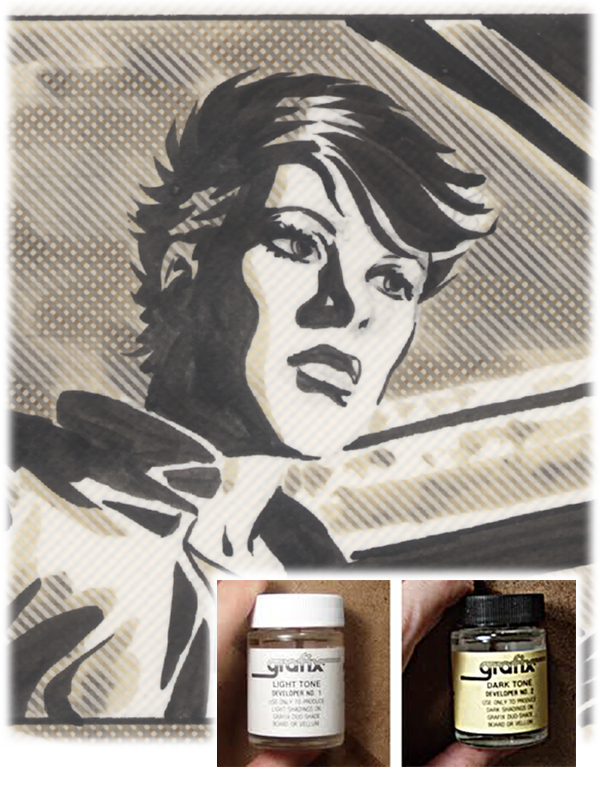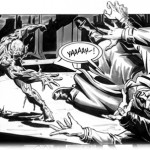Duoshades of Gray
The pages currently posting over at the Trekkercomic website were done in a now-defunct media called Duo-shade. Duo-shade was a method for generating gray tones in the pre-digital age when standard comics cold not print actual gray areas. You had to create gray values only with line patterns and textures. In earlier Trekker stories, I used zip-a-tone to achieve those gray patterns. Zip-a-tone was laborious and time-consuming work, when applied with the approach I was taking. So, this time around, I played with duo-shade.
In this method, I drew on boards that came with two pre-printed line patterns, one a lighter pattern and one darker. These patterns were in a light, unreproducible blue ink that was activated when you painted a clear chemical developer over them. One developer would activate the lighter line pattern, turning it into reproducible black lines, and a second developer wold activate the darker pattern. The process required careful panning out before hand, but resulted in a much more efficient way to get the gray tones on the art. Looking at the results, it looks something like gray wash effects, the way I used it here.
A down-side to duo-shade is that over time, the activated line patterns discolor and fade. You may notice some patchy areas in the gray tones of this story. Which means that the fading process has begun with these pages.
Duo-shade and zip-a-tone were both widely used methods in comics and cartooning for decades. But with advances in printing processes, and especially with the coming of digital technologies, these “old school” techniques are easily and efficiently simulated.
Enough of the shop-talk! All of these methods are just ways to try to evoke a world for the story to live within, and for the reader to enjoy discovering. Coming up, I’ll look a bit more at what I’ve been trying to achieve on that level.



